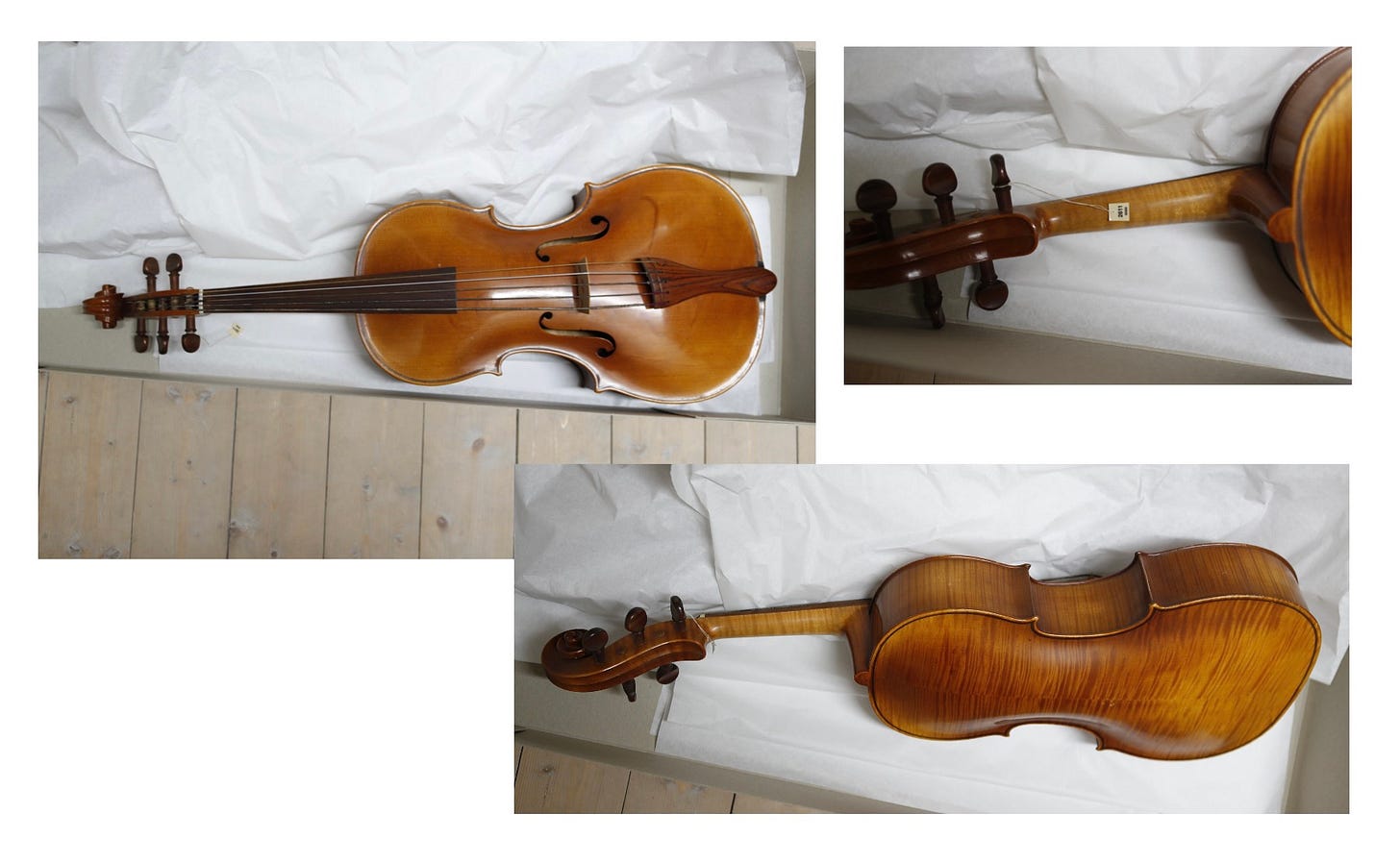While reading the (many times quoted in this newsletter) work of Agnes Kory on tenor cellos, my curiosity was attracted by the fact that in some museums, not just in one (Paris, Milano, Markneukirchen), they have several instruments with measures equal to our Violoncello da Spalla but made in the first two decades of the 20th century. Why did they make them? Did they have a market?
I got in touch with Ekkard Seidl, Geigenbaumeister in Markneukirchen and researcher specialised in Vogtland string instruments.
He was so kind to go to the museum and send me pictures of some instruments for a quick reference, and I have found a little treasure in those pics! That’s why this article is a “part 1” 😬. Ekkard Seidl told me that these instruments didn’t have a historical research background but were mainly “samples” made by violin makers in the 20s to bring them to fairs and exhibitions to find new customers and new niches. However, it strikes me that two of them are pretty precise five strings Violoncellos da Spalla, with measures so close to those we are making today.


We hope we can soon plan a trip there. There are more interesting instruments to see! Markneukirchen is in lovely countryside, and a small town where literally everyone is making instruments, of every kind, has a special feeling for us.
A little side-note from another instrument, a Viola Pomposa made in Poland in the 19th century, low ribs, catalogue 1267. A gut string is fastened between the tailpiece and the bridge to prevent the bridge from moving forward while tuning. I have seen this many times in old double basses, and it means one thing: that wound strings were wound with round metal wire. They didn’t slide on the bridge. They had to be helped by lifting them with the fingers from time to time to prevent the bridge from moving and falling. And at every tuning, the player would check the stable position of his bridge. This is not a great discovery, as the round metal wire was the only option for wound strings up to 1930 at least. I am mentioning this here because I think the period instruments world would be muuuuch more interesting when everyone keeps this in mind. A flat wire string is not a baroque string, even with a gut core.
Updates from our workshop
This week I finally completed the neck of my Violoncello da Spalla, and I glued it today. Violoncello da Spalla is a baroque instrument, so the neck is glued on the ribs. Alessandro completed the thickening of his top and also cut the ff holes.
Featured video of the week
Enjoy this Beethoven sonata by Sergey Malov!






